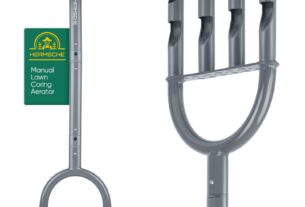If you’re looking for a tool box that can store your tools safely and securely, then hinges are one of the most important components to consider. Hinges play a crucial role in ensuring that your tool box remains functional and durable over time. However, with so many types of hinges available on the market today, it can be challenging to determine which ones are best suited for your needs.
In this article, we’ll provide you with a comprehensive guide to choosing the right hinges for your tool box. We’ll explore different types of hinges, their features and benefits, and what factors you should consider when selecting the perfect hinge for your tool box.
Understanding the Basics of Hinges
Before we dive into specific types of hinges, let’s take a moment to understand the basics of how they work. Hinges are simple mechanical devices that allow two solid objects to pivot or rotate around a fixed point. In the case of tool boxes, hinges attach the lid or cover of your tool box to its base.
Hinges come in various sizes and shapes, but all share similar components: a fixed pin or screw that attaches the hinge to one surface and a movable joint that connects it to another surface. The movable joint allows the attached objects to move up and down or side-to-side without detaching from each other.
Types of Hinges
1. Butt Hinges
Butt hinges are one of the most commonly used hinge types in tool boxes due to their simplicity and reliability. They consist of two metal plates attached by a central pin or rod. One plate is attached to the lid or cover, while the other is attached to the base of the tool box.
Butt hinges can support heavy loads and come in various sizes, making them suitable for different types of tool boxes. They also have a simple design that makes them easy to install and maintain.
2. Continuous Hinges
Continuous hinges, also known as piano hinges, are long and narrow strips of metal that run the entire length of your tool box’s lid or cover. They provide a seamless and sturdy connection between the two surfaces, reducing the risk of detachment or failure.
Continuous hinges are ideal for large tool boxes that require extra support due to their size and weight. They’re also popular among DIY enthusiasts who want to create custom-sized tool boxes.
3. Strap Hinges
Strap hinges are another common hinge type used in tool boxes. They consist of two flat metal plates connected by a central pin or rod. One plate is attached to the lid or cover, while the other is attached to the base of the tool box.
Strap hinges come in various sizes, making them suitable for different types of tool boxes. They’re also easy to install and adjust, making them an excellent choice for DIY projects.
4. Concealed Hinges
Concealed hinges are a popular option for those who want a sleek and modern-looking tool box with no visible hardware. They’re hidden from view when the tool box is closed, allowing for a clean and polished appearance.
Concealed hinges typically require precise installation and may not be as durable as other types of hinges due to their small size and limited load capacity.
Factors to Consider When Choosing Hinges for Your Tool Box
1. Load Capacity
The primary factor to consider when choosing hinges for your tool box is load capacity. You should select a hinge that can support the weight of your tools without bending or breaking over time.
2. Size and Shape
You’ll also need to consider the size and shape of your tool box when selecting hinges. The hinge should fit snugly without interfering with other components of your tool box.
3. Material
Hinges come in various materials such as steel, brass, aluminum, and plastic. Each material has its unique benefits and drawbacks, so you’ll need to consider which one best suits your needs.
4. Durability
Durability is also an essential factor to consider when selecting hinges for your tool box. You want a hinge that can withstand frequent use and exposure to different weather conditions without rusting or deteriorating.
Conclusion
Choosing the right hinges for your tool box is crucial to ensure that it remains functional and durable over time. Whether you’re looking for simplicity, durability, or aesthetics, there’s a hinge type out there that’s perfect for your needs.
Remember to consider factors such as load capacity, size and shape, material, and durability when selecting hinges. With this guide in mind, you’re well on your way to finding the perfect hinge for your tool box.
Wiki Reference: https://en.wikipedia.org/wiki/Hinge




